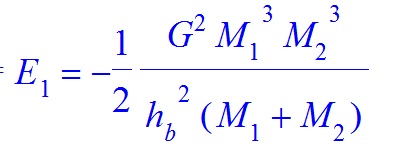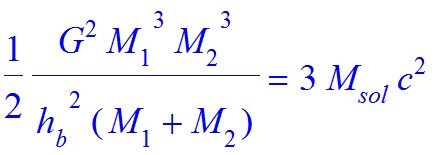Other possibility is as follows.
We assume that the total gravitational energy emitted as gravitational waves due to the formation of GW170814 is given by −E1 where

and G is the gravitational constant, M1 and M2 are the masses of the two black holes and hb is the gravitational Planck constant. In order to compute the value of hb we assume that

Then we obtain

it is to say
hb=0.1035899036×1046J−s
Using such value we deduce that the frequency of the gravitational wave emitted due to the formation of GW170814 is 82.50898602 hertz. The corresponding period is 0.01211989200 seconds and the corresponding wave length is 3635.967600 Km.
Do you agree?
Similar computations can be performed for GW150914 and GW170104 and the obtained results are very good approximations to the observed values.
 Q&A (4909)
Q&A (4909) Reviews (205)
Reviews (205) Meta (440)
Meta (440) Q&A (4909)
Q&A (4909) Reviews (205)
Reviews (205) Meta (440)
Meta (440)